How To Monitor Employees' Computer Activity Without Breaking the Law
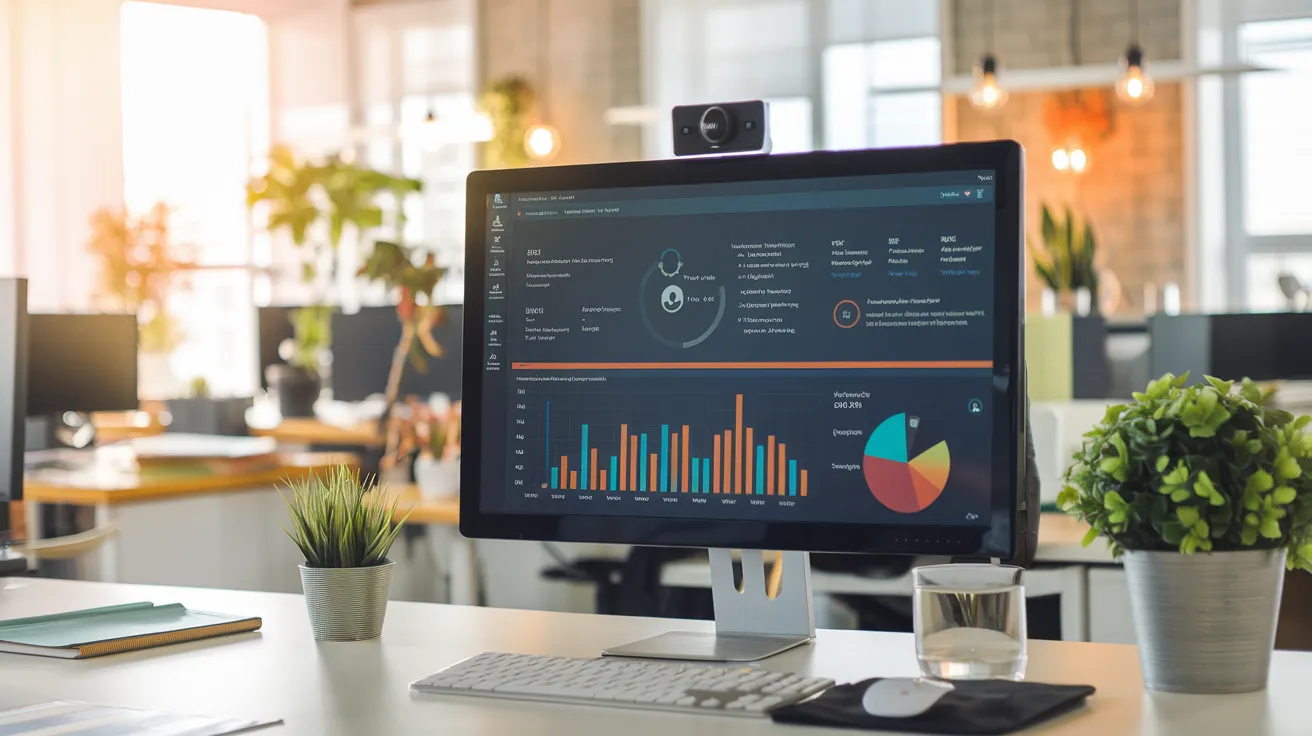
Key Takeaways
-
Balance Productivity & Privacy – Transparent policies and ethical tracking improve efficiency without micromanagement.
-
Use the Right Tools – Choose between software, hardware, and manual monitoring based on business needs while complying with regulations.
-
Empower Employees – AI-driven insights, self-tracking tools, and open communication build trust and accountability.
Employee monitoring is a double-edged sword—done right, it enhances productivity and security; done wrong, it breeds distrust and legal risks.
With 45% of employers tracking keystrokes, emails, and screen activity, it's clear that monitoring is becoming the norm. However, businesses must find a balance between accountability and privacy to avoid employee backlash.
This guide provides a data-driven, ethical employee monitoring process.
You'll learn how to track computer activity transparently, select the right tools, and implement policies that boost workforce productivity without micromanagement.
In this article:
- Why companies monitor employee computer activity
- Methods of employee monitoring
- Choosing the right monitoring tools and features
- Ethical and legal issues in employee tracking
Why Do Businesses Monitor Employees' Computer Activity?
These days, businesses are keeping a close eye on what workers do on their computers. With more people working from home and online risks growing, companies want to make sure employees stay focused and keep information safe.
So, managers are checking their employees' internet usage to:
Boost Workplace Productivity
Making sure workers stay productive is super important for companies. Wasting work time can cost businesses a lot of money.
The Cost of Wasted Work Hours
- Big loss of an estimated $1.8 trillion annually due to unproductive work hours in the U.S. alone.
- Each average employee costs their company around $1,685 every year just by not working at full speed.
- In a typical workday, people are only truly working for about 3 hours out of 8. That means almost 5 hours go to waste.
Try Apploye's time tracking to boost productivity
Security & Compliance Concerns
Keeping company assets safe is a big deal. Online threats and mistakes can cost businesses millions of dollars.
Example: An $8.5 Million Data Breach Due to Lack of Monitoring
In late 2022, Gunster found that someone had snuck into their computer network. This break-in put the personal and health information of nearly 10,000 people at risk.
The company jumped into action quickly. They fixed the network and added more security protocols to stop future problems.
However, they ended up paying $8.5 million to settle a lawsuit about the data breach. This shows how serious these security issues can be. [Source: Reuters]
By watching who accesses files, monitoring emails, and tracking weird login activity, businesses can catch insider threats and malicious activities before they get worse.
Read more about:
Employee Monitoring Laws
Remote Work Challenges & The "Out of Sight" Problem
Working from home has made employers worry about how much work is getting done and whether the remote workforce is working.
The Reality of Remote Work Productivity
Remote workers are 35-40% more productive than in-office workers due to fewer office distractions.
However, remote employees can also waste time, with studies showing that up to 30% of work time is spent on personal tasks.
This is why managers want to monitor remote employees. They want to know what WFH workers are doing on their computers.
Build a productive remote team with Apploye
Case Study: How Employee Monitoring Helped Productivity
A 2021 Digital.com survey looked at how tracking software affects work across different industries.
Companies used tools to monitor internet usage & online activities, and how long they work. Their goal was to cut down on distractions.
Here's what they found:
- 81% of businesses saw employee productivity improve after using monitoring tools.
- 52% of employers caught workers doing second jobs during employee work hours.
- 78% of employees said they used to browse non-work websites before monitoring started.
When used fairly and openly, these tools can help people stay focused and accountable.
Industry-Specific Employee Computer Monitoring Use Cases
- Healthcare – Protecting patient information and following privacy rules.
- Financial Services – Stopping fraud and controlling who sees important data.
- Call Centers – Making sure workers do their jobs well and follow guidelines.
- IT Companies – Finding and stopping insider security risks.
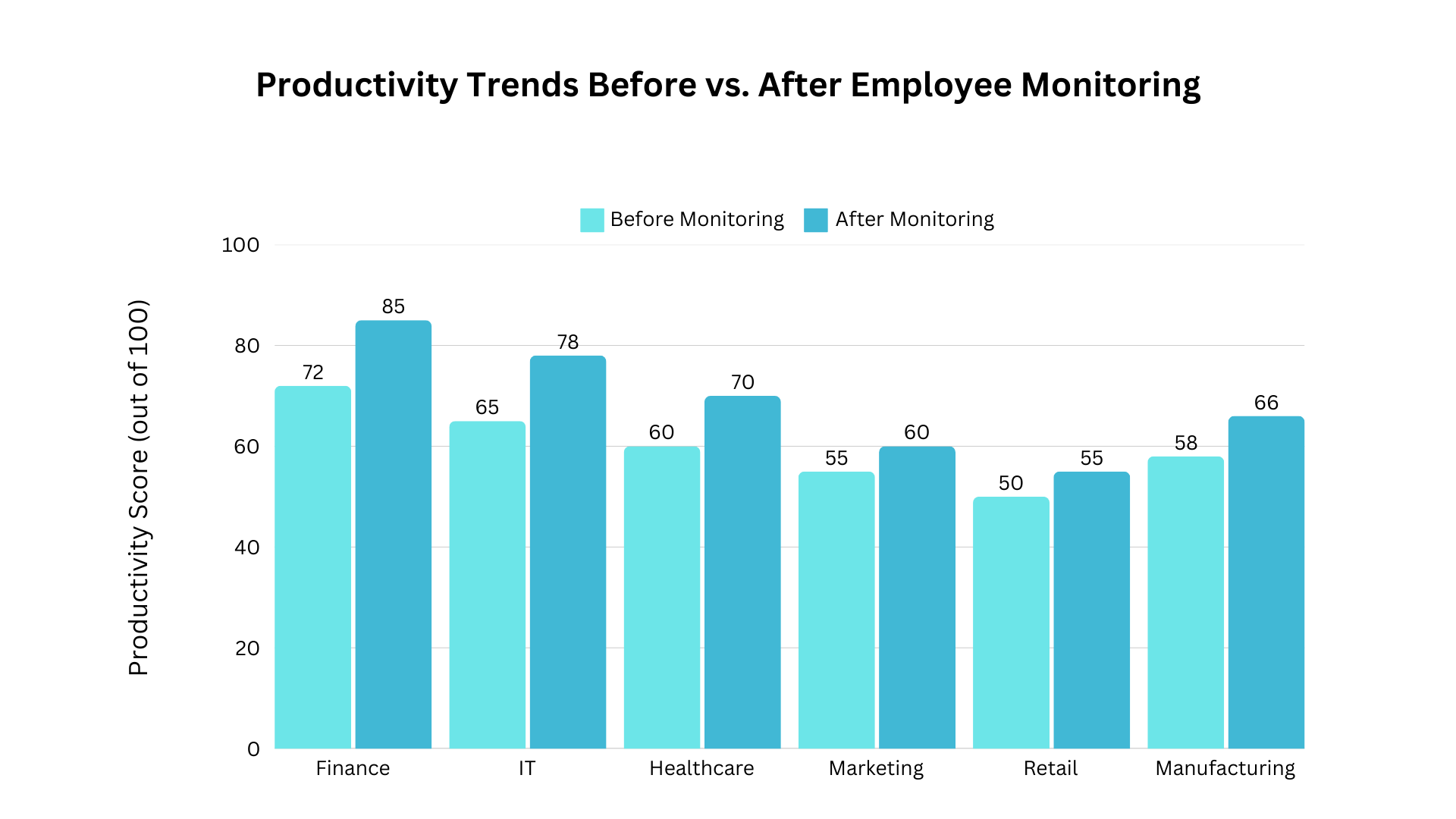
So, what is the main point of checking workers’ laptops and computer activities?
When done right, monitoring employee performance can help everyone stay on track and keep information safe.
Different Methods to Monitor Employee Computer Activity
Keeping track of what employees do on their computers helps businesses stay productive, safe, and in line with company rules. There are different ways to do this, like using special software, hardware tools, or even checking things manually. Each method has its own good and bad sides.
Let’s take a look at the main ways businesses keep watch.
Software-Based Laptop Monitoring
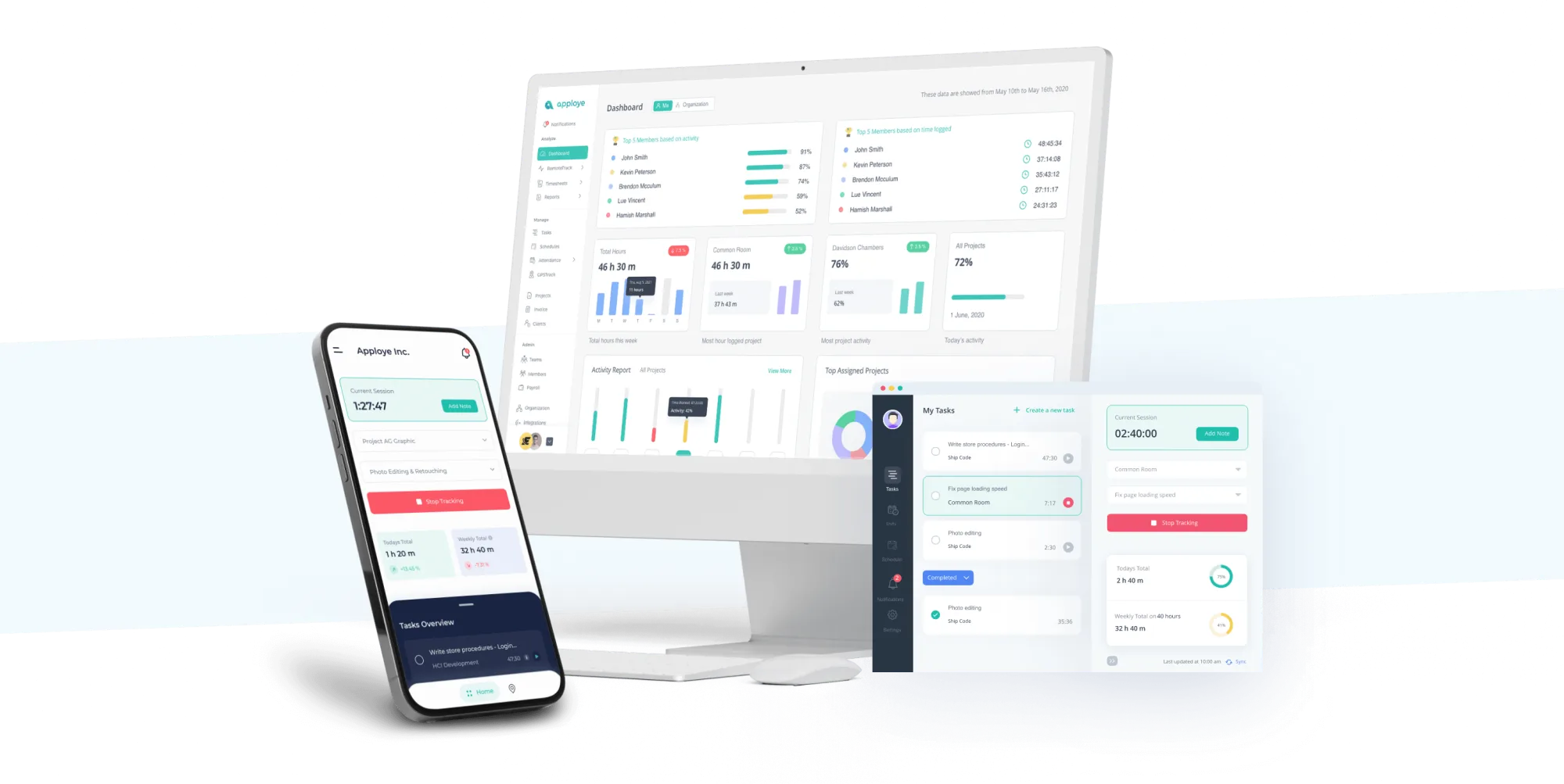
The easiest way to track what employees do on their computers is through software. These employee computer monitoring software programs help companies see which apps employees use and what websites they visit, and even track emails, files, and keystrokes. They also help businesses follow privacy laws.
Software-based computer monitoring can be divided into two categories:
Cloud-Based Employee Monitoring Software
- Runs on the internet and doesn’t need a special setup.
- Works well for remote project management.
- Easy to expand and connect with other online tools.
Examples: Apploye.
On-Premise Employee Monitoring Software
- Installed on company-owned devices instead of the internet.
- On-premise employee monitoring software offers more control over privacy and security.
- Often used in places like banks, hospitals, and government offices.
Examples: Apploye, Veriato Cerebral.
Popular Software Tools for Employee Monitoring
Also, check out:
Best Employee Time Tracking Software
Best Employee Monitoring Software
Hardware-Based Desktop Monitoring
Software isn’t the only way to track employee activity. Some businesses use physical tools for deeper tracking. For example:
Keyloggers & Physical Tracking Devices
Keyloggers record every keystroke on a keyboard. They help check for security risks or unauthorized actions. Hardware keyloggers are small USB devices that silently record typing. They are used in high-security workplaces, but they raise privacy concerns.
Network Activity Logs & Server-Based Monitoring
- Firewall Monitoring tracks which websites and servers employees visit.
- VPN & Proxy Monitoring makes sure employees connect securely.
- Data Loss Prevention (DLP) Systems stop sensitive files from leaving the company’s network.
Pros and Cons of Monitoring Employees’ Laptops with Hardware
Try Apploye's software-based monitoring instead
Manual Computer Activity Monitoring
Some companies prefer a hands-on approach that checks the activity of employees themselves. This method doesn’t need special software or tools. Businesses use Excel and Google Sheets for manual time tracking and productivity tracking.
Also, this method includes:
HR and IT-Led Audits
- IT teams do surprise checks to find any potential issues.
- HR teams go over work logs and track attendance.
Spot-Checking Employee Computers
- Managers manually look at browser history, apps used, and ongoing projects.
- This is common in small businesses where software for employee monitoring isn’t an option.
Productivity Surveys & Self-Reports
- Individual employees report how they spend their work time.
- Managers review progress updates instead of constantly watching.
Pros and Cons of Observing Employees’ PC Activity Manually
- Budget-friendly for small businesses.
- Keeps a human touch instead of relying on automated monitoring systems.
- Avoids too much data collection, lowering privacy risks.
- Takes a lot of time and doesn’t provide real-time updates.
- Employees might give false reports to seem more productive.
- Hard to manage in bigger companies.
Why not automate your monitoring with Apploye?
Each business has different needs, so the best method depends on the company’s size, security concerns, and how much oversight is needed. Some prefer detailed insights with software, while others stick to simple manual checks.
Whatever method you choose, it’s important to balance productivity with employee engagement and privacy.
Types of Computer Activity Monitoring Methods
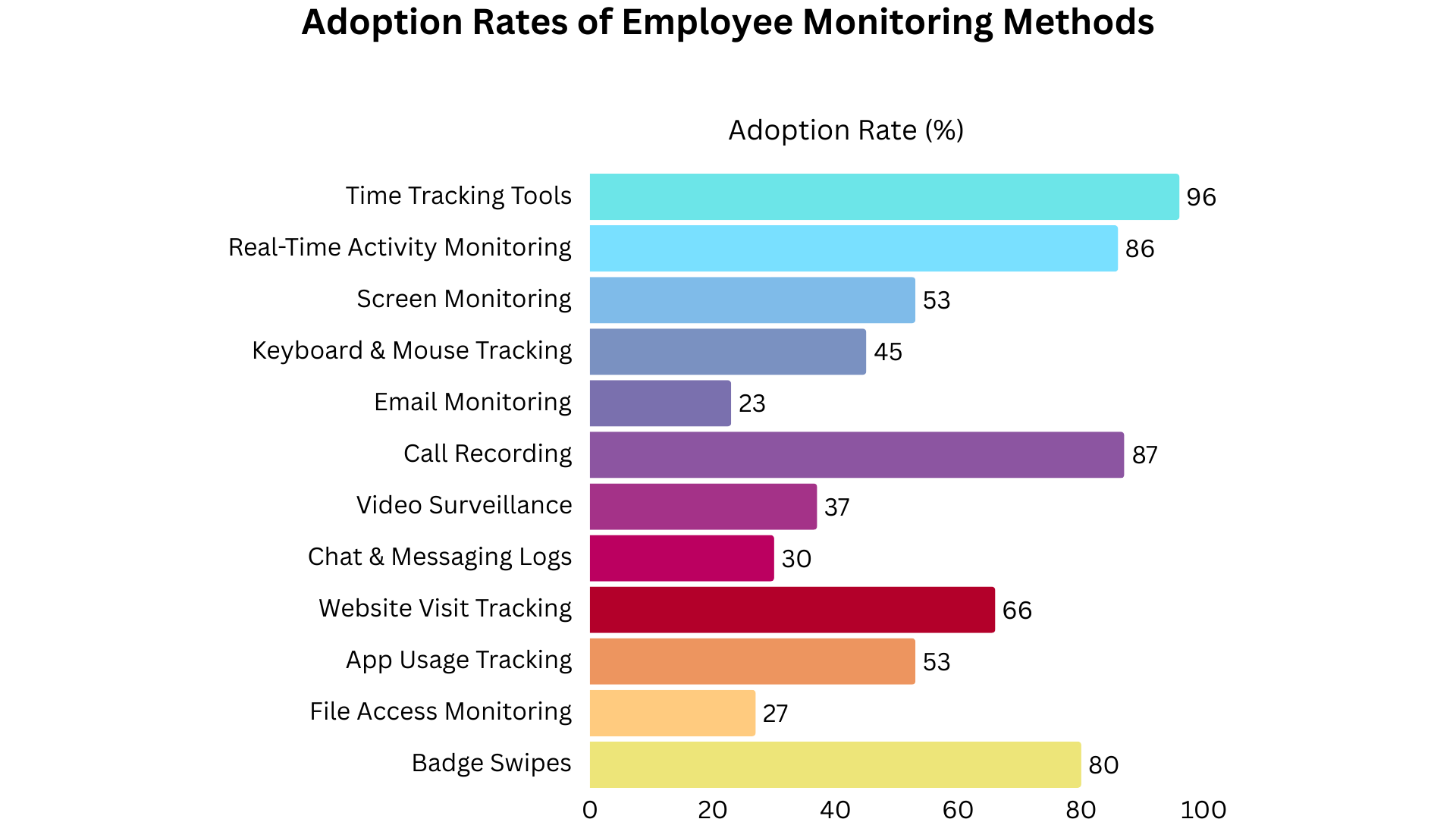
Checking employees' internet usage and online activities on their devices helps keep work on track and protects company data. It also makes sure workers follow the company rules. The way an organization monitors should be fair and respect privacy.
Here are some ways employers observe computer activity:
Real-Time Monitoring: Live Activity Tracking
Studies show that 45% of employers keep track of what employees type, how much time employees spend on tasks, and what they look at on their screens. They can do this through real-time monitoring. This includes:
- Live screen monitoring to check desktops remotely.
- Tracking when employees start and stop work.
- Console command monitoring, which records system commands that workers have executed. This is super useful for IT and security teams.
It helps employers monitor employees' computer activity by offering real-time visibility into their digital behavior.
See Apploye's real-time monitoring features
Screen Capture & Recording: Screenshot Intervals & Video Playback
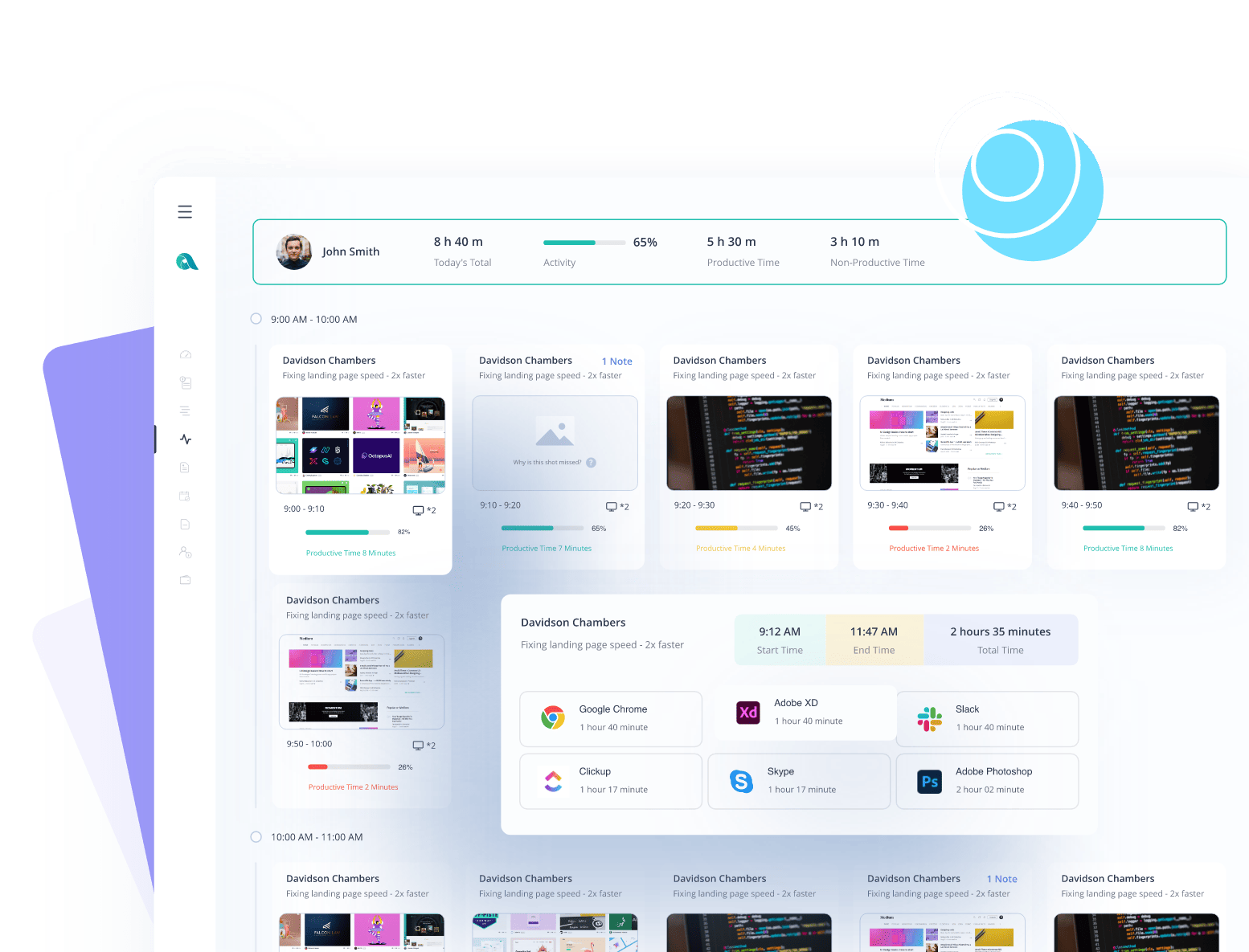
Some programs, such as a time tracker with screenshot, capture or record videos at set times to show what employees are doing. Features include:
- Automatic screenshots are taken at certain times.
- Blurred screenshots to protect privacy.
- Video recordings of work sessions to review productivity.
This method monitors employees by capturing evidence of their on-screen activities for review.
Some tools, like Apploye, can take multiple screenshots at once. This way, managers can view all the employee monitors even if they are using multiple monitors.
Application Usage Tracking: Checking Which Programs Are Used
Employers can see which apps employees use during work hours. This helps make sure time is spent on work-related tasks. Features include:
- Tracking active time spent on each app, like Excel vs. social media.
- Heatmaps that show which programs are used the most.
- A way to label apps as "productive" or "distracting".
It helps by identifying productive and unproductive software usage.
URL Monitoring: Watching What Websites Employees Visit
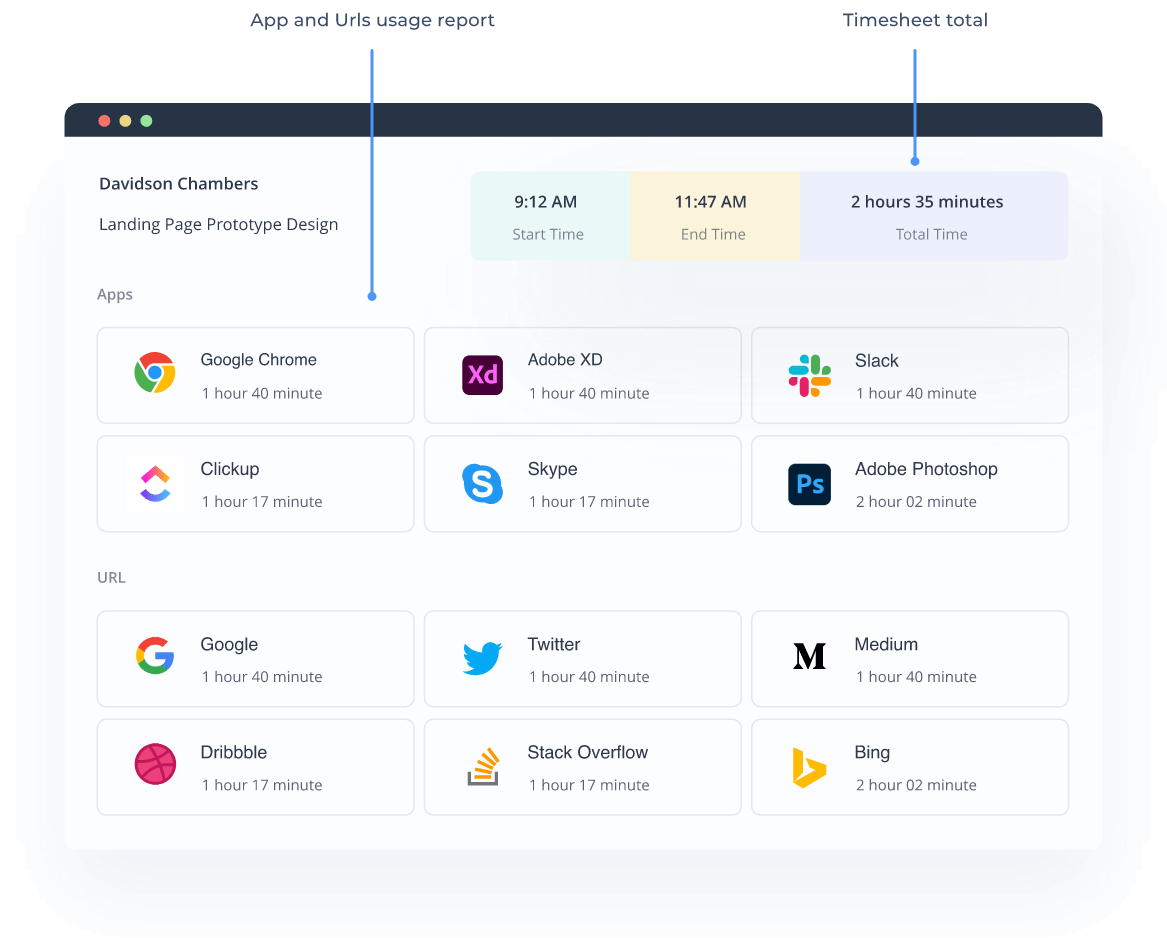
Companies can see which websites employees visit. This helps to:
- Spot time wasted on social media sites.
- Make sure employees abide by the organization's acceptable usage rules.
- Reduce security risks by blocking unsafe sites.
This system observes employees by tracking which websites they visit and assessing their productivity.
Web Filtering: Blocking Unproductive or Unsafe Websites
Corporations can block employees from visiting certain websites. This helps with:
- Blocking categories like social media, streaming, or playing games.
- Allowing or blocking specific entertainment sites.
- Sending alerts when someone tries to visit a restricted site.
It prevents employees from accessing distracting or risky websites from their devices. Industries like finance and healthcare often use this to keep sensitive information safe.
Keylogging Technology: Recording Typed Content
Keystroke logging records everything typed on a keyboard. It helps with:
- Keeping a full record of what’s typed.
- Finding risky activities, like sharing company secrets.
- Stopping data leaks.
Since this can be a privacy concern, laws like GDPR and CCPA require companies to get employee consent before using it. So, to stay within the law:
- Employees should be told if keylogging is being used.
- It should only be used when necessary, like for fraud prevention.
- Other methods, like general activity tracking, can be used instead.
For example, Apploye tracks mouse and keyboard activity levels to measure employee productivity, but does not record what employees type.
Try Apploye's privacy-friendly monitoring
Scanning Company Emails for Security Risks
Monitoring company emails ensures compliance with company policies and detects security threats. Features include:
- Scanning for certain keywords to spot sensitive data being shared.
- Tracking email attachments to prevent unauthorized access to file sharing.
- Keeping copies of emails for legal protection.
This method stops sensitive data leaks and identifies suspicious email activity on employee computers. Veriato Cerebral uses AI to scan emails and find possible security threats.
Monitoring Slack, Microsoft Teams, and Workplace Chats
With remote work on the rise, corporations check chat apps like:
- Slack
- Microsoft Teams
- Google Chat
- Zoom chat logs
This makes sure employees follow company policies and don’t share private information. Some tools send alerts to managers when employees discuss certain words or topics.
Attendance & Work Hours Tracking
The best employee time-tracking software automatically logs work hours to make payroll accurate. Features include:
- Automatic clock-ins and clock-outs through desktop or mobile devices.
- Tracking breaks to see how long employees step away.
- Scheduling shifts to manage work schedules.
Tools like Apploye and Clockify help track work hours and make sure employees are paid correctly.
Idle Time Tracking: Detecting Inactivity
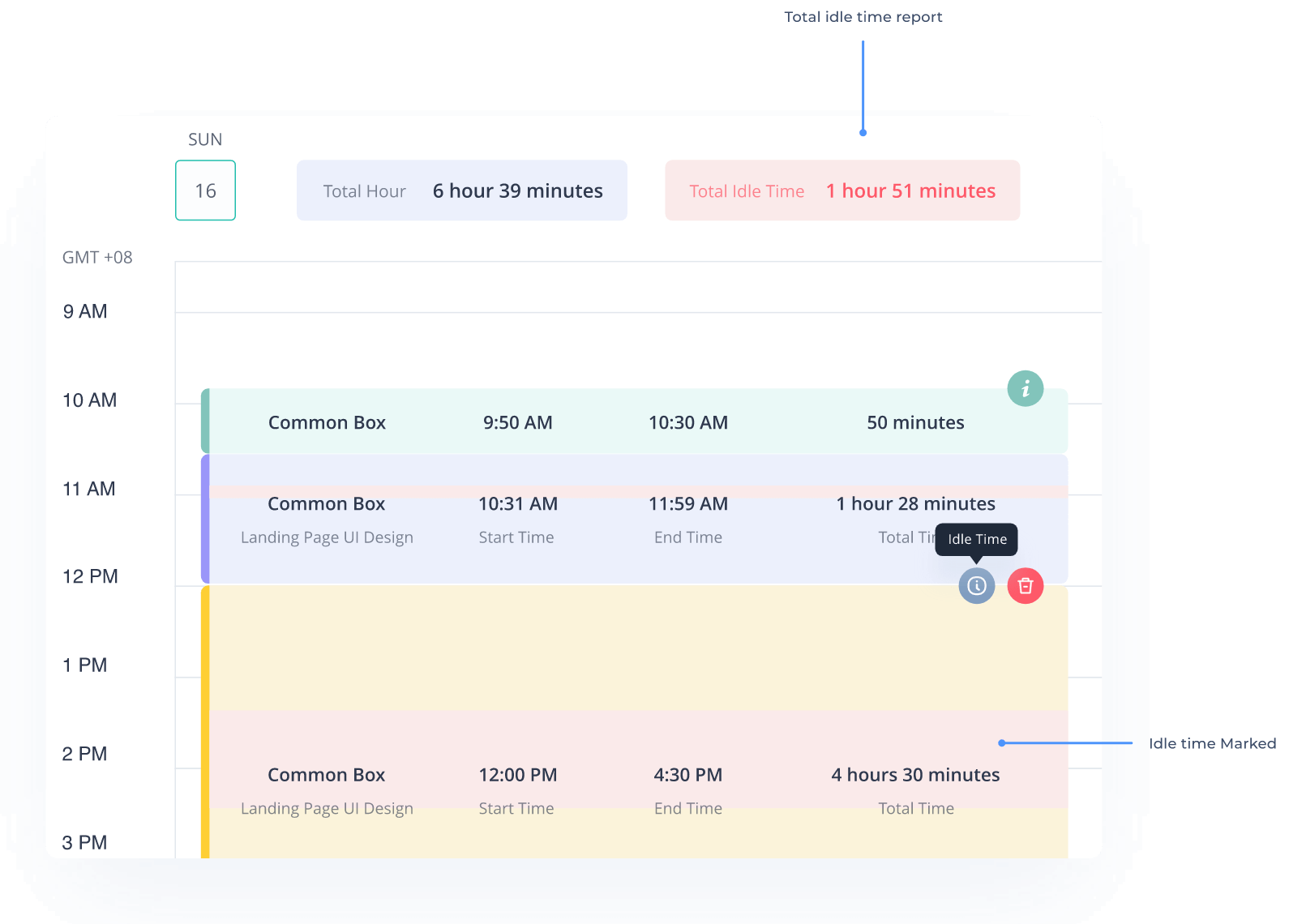
Idle time tracking shows when employees stop working. This helps to:
- Catch employees logging hours without actually working.
- Improve how work is managed.
- Encourage better time management.
It helps by identifying unproductive time and ensuring employees stay engaged on their laptops during work hours. Most tracking tools mark inactivity after a set time, reminding employees to get back to work.
VPN Tracking: Detecting Unauthorized Remote Access
VPN tracking helps keep company data safe for remote workers. It can:
- Find employees using unauthorized VPNs to get around company rules.
- Stop security risks from unsafe remote logins.
- Monitor network activity to follow acceptable use policies.
This system identifies suspicious login attempts from employee devices and secures remote work connections. Reports show that 20% of companies have faced a security issue from remote work, making VPN tracking a key part of cybersecurity.
What to Look for in Employee Computer Activity Monitoring Software
The best employee monitoring tools help keep work on track, keep data safe, and make sure rules are followed—all while keeping things fair for employees.
Here are some important things to check before choosing a monitoring tool:
1. Real-Time Monitoring & Alerts
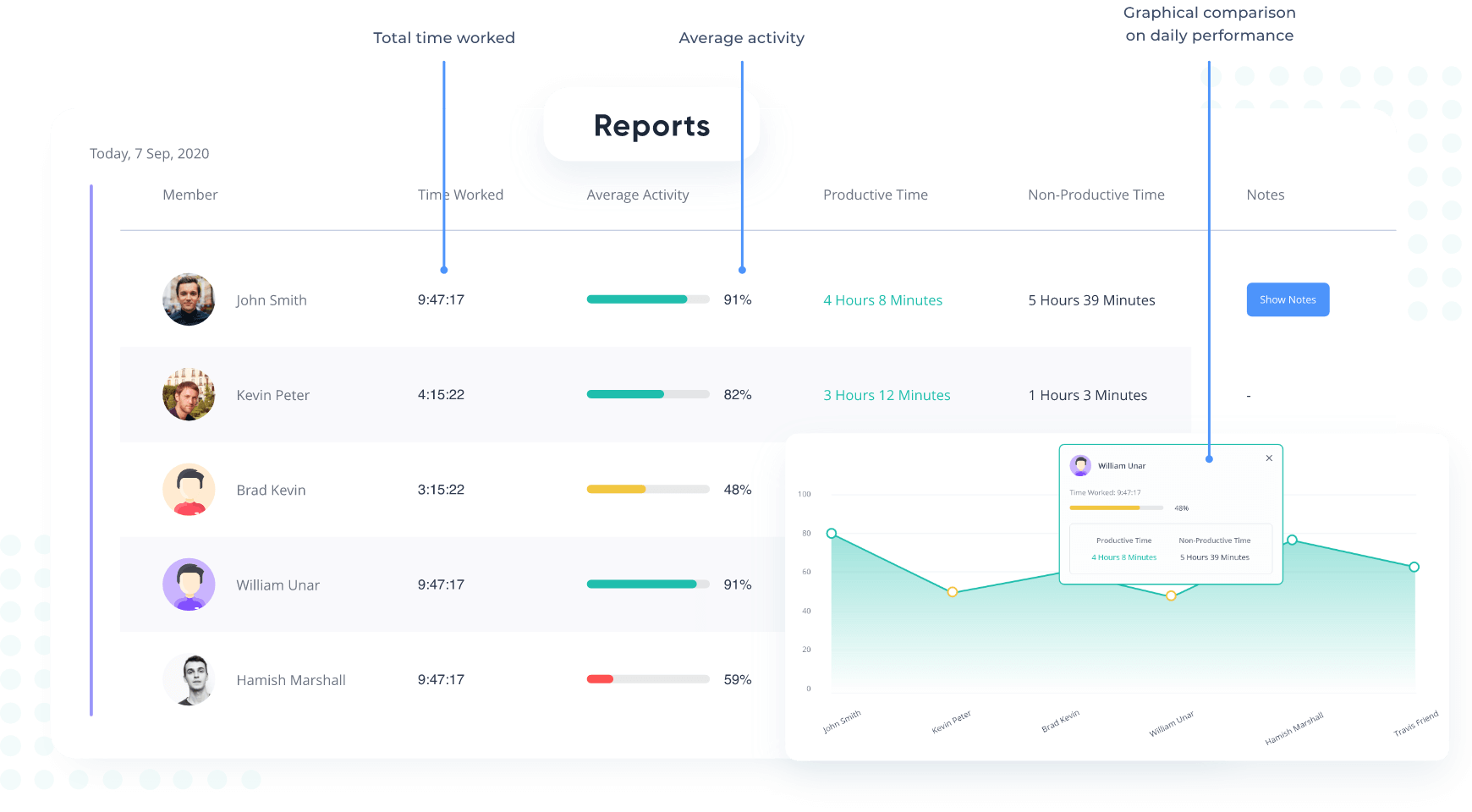
Live tracking lets you see what’s happening in real time, so you know when employees are working and if anything unusual happens. Some software, like Apploye, offers:
- Live screen tracking to check what’s happening on employees’ screens.
- Instant alerts for things like trying to open restricted files or visiting blocked websites.
- Daily, weekly, and other timesheet activity reports to see when employees are working or taking breaks.
2. User Activity Logs & Audit Trails
Keeping records of what employees do helps businesses stay safe and spot problems. A good system should keep track of:
- Log in/log out times to check attendance.
- Website and app usage times to spot distractions.
- File transfers and downloads to prevent data leaks.
- Keystroke tracking (optional) for extra security.
These records act like a safety net, helping businesses investigate issues and follow legal rules.
3. Productivity Scoring & Analysis
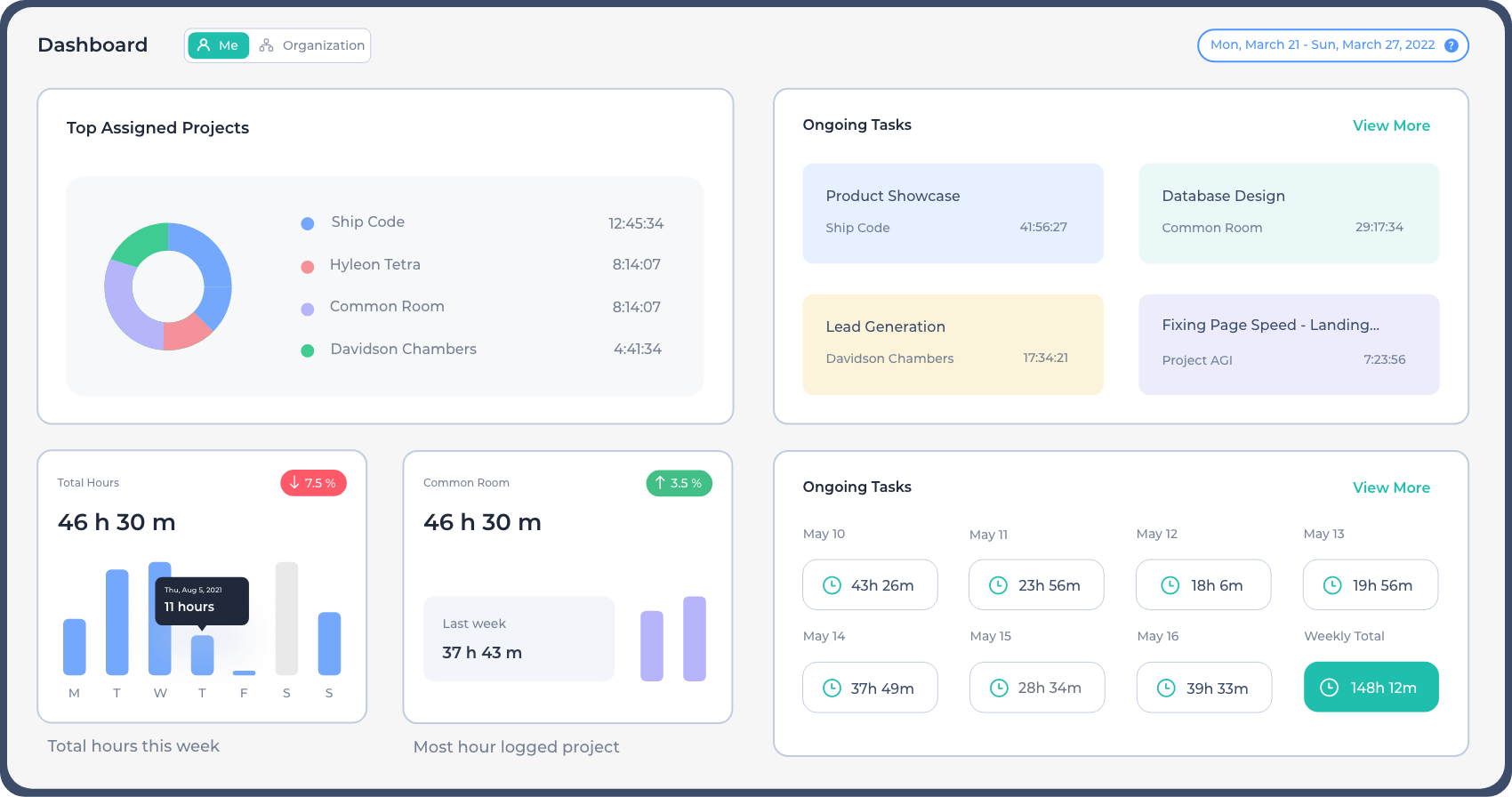
Monitoring software can help find ways to work smarter. Some tools even use AI to spot patterns and improve efficiency. Features may include:
- Sorting websites and apps into “useful” or “distracting” categories.
- Tracking work hours to see when employees are most productive.
- Detailed reports showing time spent on projects or tasks.
- Monitoring idle time to catch long periods of inactivity.
Boost team productivity with Apploye today
4. Customization & Policy Settings
Every company has different rules, so it helps when monitoring software can be adjusted to fit different needs. Look for:
- Different tracking levels (basic activity tracking vs. full monitoring).
- Customizable reports to track performance across teams.
- Controlled access to employee computers so that only certain people can see monitoring data.
- Rules for flagged activities, like sharing sensitive information.
5. Integration with Payroll & Project Management Tools
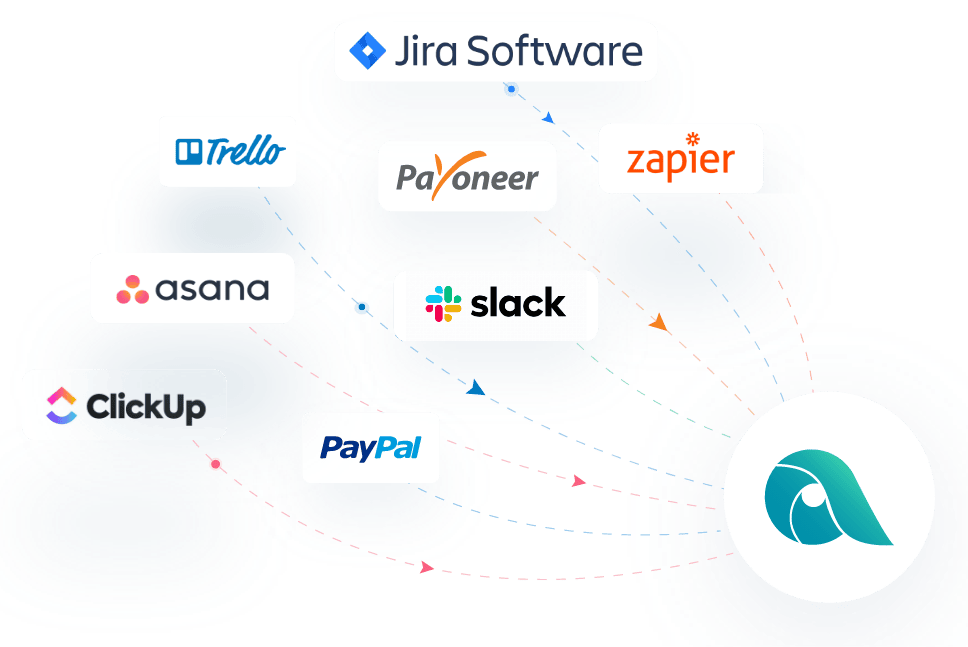
A good monitoring tool should connect with other business software to keep things running smoothly. Some useful integrations include:
- Payroll systems for tracking work hours and handling payments.
- Project management tools (like Asana, Jira, or Trello) to follow tasks.
- HR & compliance tools for attendance management and to follow legal requirements.
- Third-party vendor monitoring for businesses that outsource work.
6. Stealth vs. Transparency Mode (Silent vs. Employee-Aware Tracking)
Some software runs in the background without employees knowing, while others notify employees that they’re being tracked.
- Hidden mode is common in industries where security is a top priority, like finance and healthcare.
- Visible mode is better for businesses that want to build trust, as employees are aware of the tracking.
7. Data Protection & Security Compliance (GDPR, CCPA, etc.)
To avoid legal trouble, it’s important to choose software that protects employees' privacy and follows laws like GDPR and CCPA. Look for:
- Privacy law compliance to meet legal standards.
- Data encryption & secure storage to prevent hacking.
- Controlled access so only authorized people could view sensitive data.
- Tracking of important documents to prevent unauthorized sharing.
Picking the right employee monitoring solutions helps businesses stay organized, protect information, and keep employees accountable. Make sure to choose one that fits your company’s needs!
The Smart Way to Monitor Employees' Computer Usage (Without Micromanaging)
What Works: Data-Backed Monitoring Strategies
Watching how employees use computers works better when it's friendly and fair. Good monitoring keeps work safe and on track without making people feel bad.
Introduce Monitoring Without Losing Trust
How you tell employees about monitoring makes a big difference. Being open is super important. I'd suggest:
- Explaining the Purpose – Tell everyone clearly why you need monitoring (like making work flow better or keeping data safe).
- Sharing What Data Will Be Collected – Let people know if you're checking websites, apps, work hours, or how active they are.
- Giving Employees Access to Their Own Data – When workers can see their own reports, they feel more responsible instead of upset.
- Creating an Open Discussion – Ask employees to share what they think and how they feel about it.
According to Forbes 30% of workers are okay with being monitored (as long as it's done honestly and fairly).
Best Practices for Legal & Ethical Ways to Observe Employees' Computers
- Don't track keystrokes or use webcams & audio recordings unless you really have to.
- Let people know when monitoring happens or give them a choice.
- Group data together so no one person stands out in a bad way.
What Fails: Employee Monitoring Mistakes
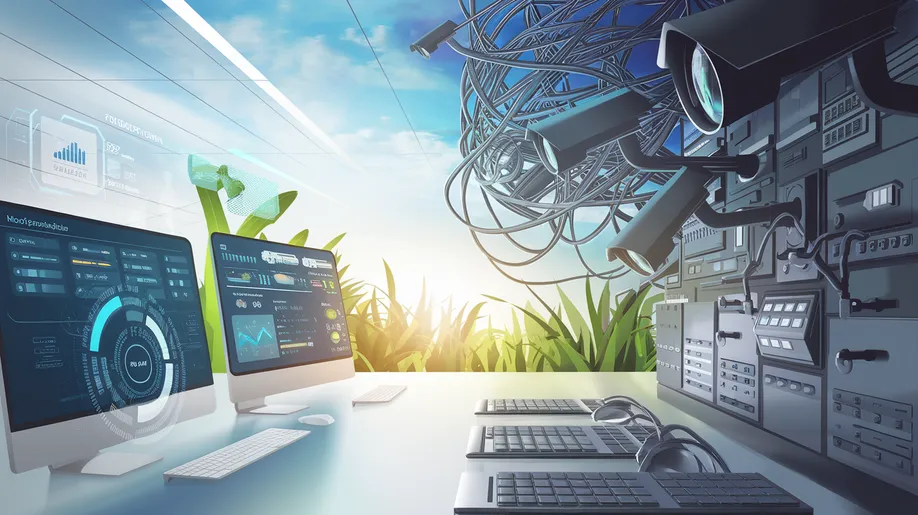
Excessive Micromanagement: The “Big Brother” Effect
Too much watching over people's shoulders is bad news. For example:
- Micromanagement lowers efficiency by 16% and increases burnout.
- Employees under constant supervision are 50% more likely to disengage.
- Over half of workers feel stressed when watched, and 54% are willing to quit over excessive monitoring, leading to higher employee turnover.
Effective monitoring should provide actionable insights, not minute-to-minute surveillance.
Hidden Tracking (Stealth Monitoring)
Secret tracking breaks trust. Most workers (70%) think it's not right to watch them without telling them. That's why rules like GDPR and CCPA say you must get permission before you start monitoring.
One-Size-Fits-All Approach
Strict rules don't work for every job. For instance, a tech company that blocks YouTube and design tools ends up hurting its creative teams.
So, it's better to be flexible about monitoring different kinds of jobs.
Balance monitoring with trust using Apploye
Learn more about:
Does Employee Monitoring Increase Productivity?
Employee Monitoring Statistics
How to Implement Employee Monitoring Systems to Check Computer Activity Without Causing Backlash
It's tricky to watch what your staff does on computers. If you check too much, people get upset. If you don't check enough, work might not get done right.
The best way is to be open, use advanced AI tech, and let workers feel in charge.
Use AI-Based Productivity Insights Instead of Constant Surveillance
Traditional monitoring methods, like keystroke logging and continuous screen recording, often create an atmosphere of distrust. Instead, companies can leverage AI-driven insights to gain insights without excessive surveillance.
Businesses that use AI-powered productivity tracking experience a 15-30% improvement in operational efficiency.
How does artificial intelligence help you check employees’ computer usage?
AI finds bottlenecks, tasks that happen over and over, and how much gets done without looking at personal stuff.
Here’s how to utilize AI:
- Set up alerts instead of watching all the time
- Look at work patterns instead of every second of someone's day
- Use tools that show where work slows down so managers can help teams do better
Communicate Policies Clearly to Build Trust
When workers don't know what's going on, they might care less about their work. Studies show that 65% of workers are okay with being checked if they know why it's happening.
- Transparency Tip: Make it clear what you're checking, why, and how. Workers should know it's not about watching their every move but making work better and keeping company devices safe.
- Legal Considerations: Make sure you follow rules like GDPR, CCPA, and HIPAA by letting workers say yes to being watched.
Example of Trust-Building: Apploye lets workers start and stop tracking when they want, giving them control over what gets recorded.
Best Practices:
- Create an employee monitoring system policy that is shared during onboarding.
- Use dashboard notifications to remind employees when tracking is active.
- Hold Q&A sessions to address privacy concerns and misconceptions.
Build trust with Apploye's transparent features
Offer Self-Tracking Tools to Empower Employees
Studies show workers who track their own time get 22% more done. Instead of just having bosses monitor, companies can give workers tools to track themselves.
When workers can see their own work data, they feel more in control of how they work, and they care more about doing a good job.
So, instead of checking every key they press, let workers tell you what they did during office hours.
Here's how to use self-tracking systems:
- Use tools that provide individual productivity reports.
- Help workers set their own goals.
- Let workers track their breaks, focus time, and deep work.
Case Studies: How Companies Use Monitoring Effectively
Douglas Academy Improved Productivity by 28% with Employee Monitoring Software
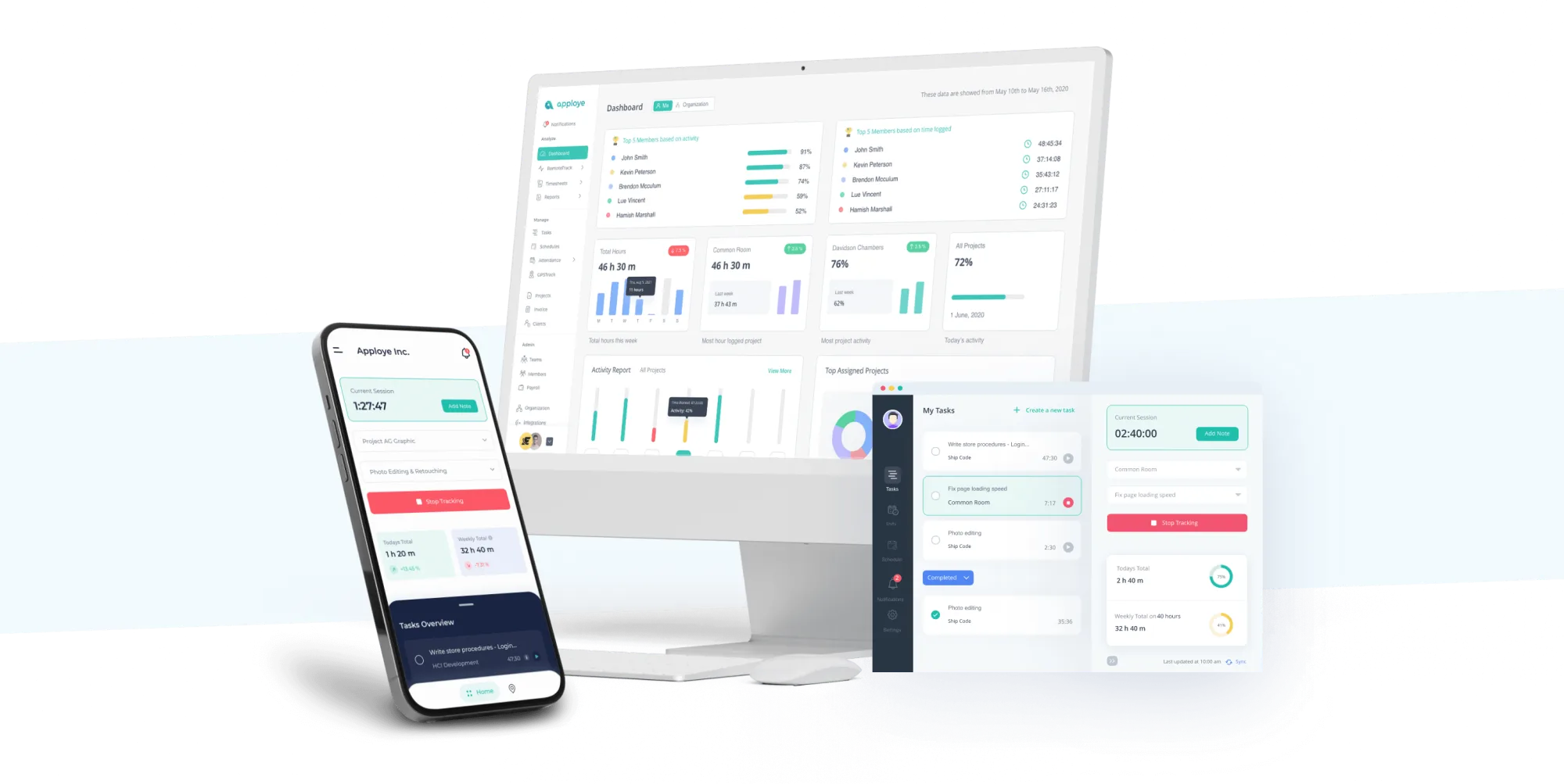
Douglas Academy teaches robotics and coding in Canada. They had a tough time keeping track of their teachers since many worked online or at different schools. They trusted their staff, but there was no way to check if teachers were showing up or how well they were teaching.
That’s when Mohammad D., the operations director, decided to use Apploye’s time tracker. It helped by:
- Automatically tracking teachers’ work hours.
- Taking random screenshots of online classes to check teaching quality.
- Measuring actual performance to make sure teachers were being used efficiently.
The results were surprising. In less than a year, team performance jumped by 28%! The school got more done while still keeping trust in their teachers.
This shows that keeping an eye on things in a fair way helps everyone stay accountable, without making them feel watched all the time.
How Apploye Helped LOUD & Spacecaps Stay on Track & Boost Productivity
Matt H., co-founder of LOUD & Spacecaps, needed a simple way to keep track of project deadlines. He also wanted to stay focused and not get sidetracked by smaller tasks. So, he tried Apploye, and it worked great!
This tool helped Matt and his team stay on schedule. It broke work into smaller parts and suggested short breaks. Plus, it made sure they tackled the big tasks first before getting lost in the little ones.
Matt didn’t have to constantly check on his team. But with the app, he could easily see how things were moving along. It also cut down on office distractions, helping everyone stay on task.
In the end, Matt found Apploye to be both useful and budget-friendly. It kept his projects on track and made things run smoothly.
Conclusion: The Right Way to Monitor Employees
Employee monitoring should be a tool for empowerment, not control. When implemented transparently and ethically, it can enhance productivity, security, and compliance without damaging trust.
Businesses need to clearly define goals, use privacy-conscious internet usage monitoring software, communicate openly, and adjust policies based on feedback. And they’ll see higher engagement and efficiency.
By focusing on results over surveillance, you create a workplace that is both accountable and supportive.
Start your Apploye journey today

